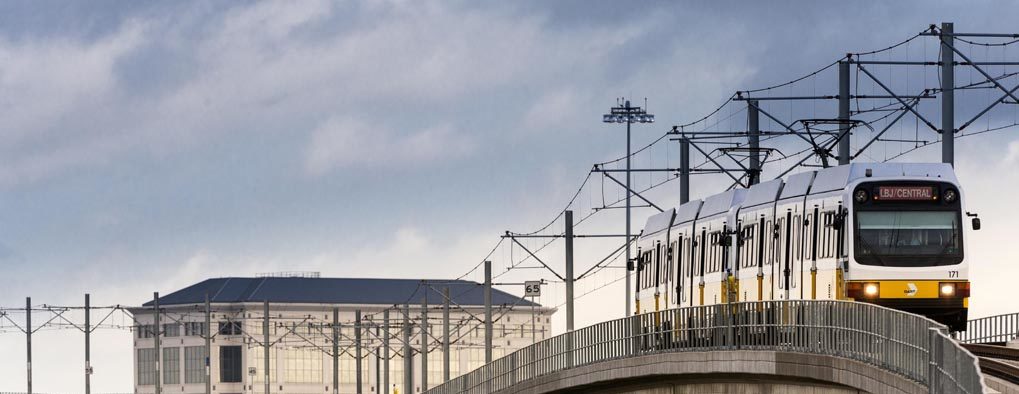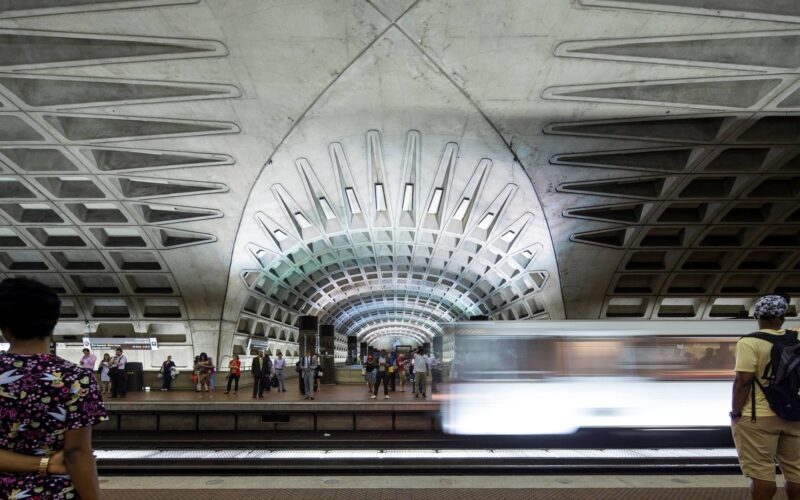
Photo Credit: Williamson Images
Dallas Area Rapid Transit (DART)’s many shortcomings as a public transit agency are by now well documented, thanks to last year’s bombshell report from the University of Texas, Arlington and incisive ongoing news coverage. With fares slated to go up in August and a long-overdue bus network redesign that appears to be stalled, Dallas transit riders continue to pay a premium price for service that doesn’t get them where they need to go.But with the appointment of Michael Rogers as director of the newly-formed Dallas Department of Transportation, relief may be in store.
Rogers is no stranger to the role, having helped to establish Departments of Transportations in Raleigh, Peoria and San Antonio. He started just last October, but his department is already waist-deep in crafting a strategic mobility plan that takes a complete look at mobility and barriers to access across the city. He’s quick to point out that this is not your typical level of service plan, and it won’t just sit on a shelf. He acknowledges that historically, Dallas has been absent transportation leadership, but explains that the City is beginning to look at things in a holistic manner, from the perspective of pedestrians, cyclists, and the disabled. “Transit doesn’t work without access, and this assessment will provide the city with information about where we need to provide sidewalks so people can get to transit stations, and ensure linkages throughout the city.”
Rogers is particularly interested in changing Dallas’ relationship with DART. Formerly, the city’s role has been that of yes man – directing tax breaks and incentives toward development far from housing and transit. It’s one of the reasons that 42 percent of households in Dallas are underserved by public transportation. Rogers explains: “If you look on DART’s website, it says “DART drives investment.” But investment doesn’t happen in a vacuum – it needs to be done in partnership, with supportive land-use.” He points to Inland Port, an employment center in the south of the city a mile away from the end of the rail line – thousands of jobs that people literally can’t get to. “I’ve ridden along with workers at many of these companies and I keep hearing “we want to work, but it takes me two to three hours to get to our jobs.”
When it comes to connecting residents to opportunities, Rogers says Dallas has indeed failed. “The majority of our city’s transit ridership is on buses, but that’s not where we’ve put the majority of our resources.” But those days could be over – the city recently indicated it would not sign off on yet another rail expansion without a commitment from DART to making bus improvements. “We the city do have a say in making public transit more efficient and effective. If this system goes through the city, it’s within our purview to say, we MUST have these things.”
Rogers sees the potential tear-down of I-345, an elevated freeway that slices through downtown, as a once-in-a-generation opportunity. “How many times will a city be in this position? Instead of a six lane boulevard [that was in the plans when I arrived], we can use this to connect communities.” His department is now looking at installing transit-only lanes and signal priority along the corridor.
These types of improvements will serve as the foundation for overcoming what Rogers considers the primary obstacle to sound transportation planning in Dallas – the prevailing notion that that rail is somehow superior to a bus. “Everyone’s excited about trains – no one is excited about the bus. In fairness, if your bus is in the same traffic as a car, you’re not really going to see the benefit.” Rogers says that his department is committed to shifting transportation priorities to send the message that if you ride transit, you’ll get there before a car. “Bus rapid transit can help us change the perception that it’s only those people that ride buses.”
Rogers is also hoping to coordinate with the newly enlivened DART board by setting up regular meetings. “We think it’s important as we’re creating our mobility plan in tandem with housing and economic development to help board members understand what it all means and where we’re trying to go as a city.”
 On the Brink: Will WMATA’s Progress Be Erased by 2024?
On the Brink: Will WMATA’s Progress Be Erased by 2024?
The experience of being a WMATA rider has substantially improved over the last 18 months, thanks to changes the agency has made like adding off-peak service and simplifying fares. Things are about to get even better with the launch of all-door boarding later this fall, overnight bus service on some lines starting in December, and an ambitious plan to redesign the Metrobus network. But all of this could go away by July 1, 2024.
Read More A Bus Agenda for New York City Mayor Eric Adams
A Bus Agenda for New York City Mayor Eric Adams
To create the “state-of-the-art bus transit system” of his campaign platform, Mayor Adams will have to both expand the quantity and improve the quality of bus lanes. We recommend these strategies to get it done.
Read More